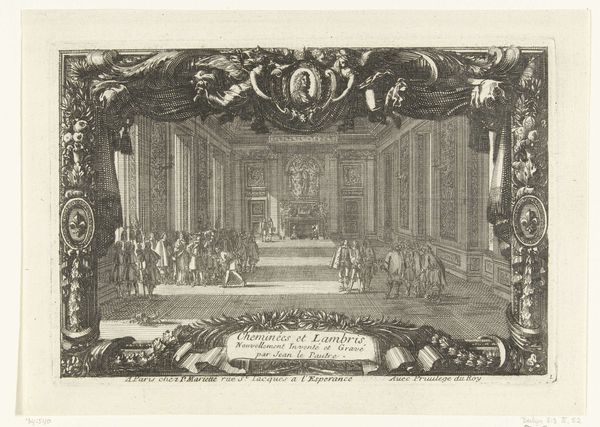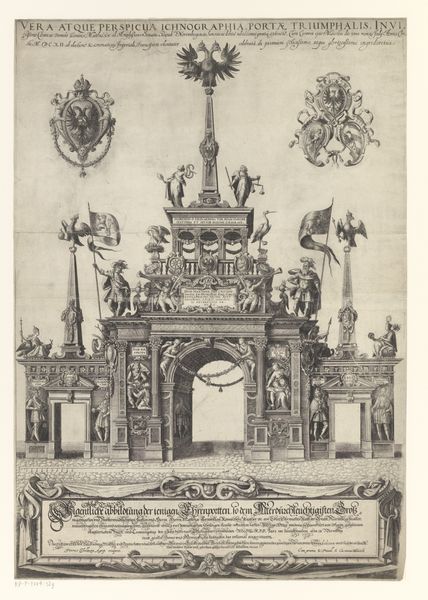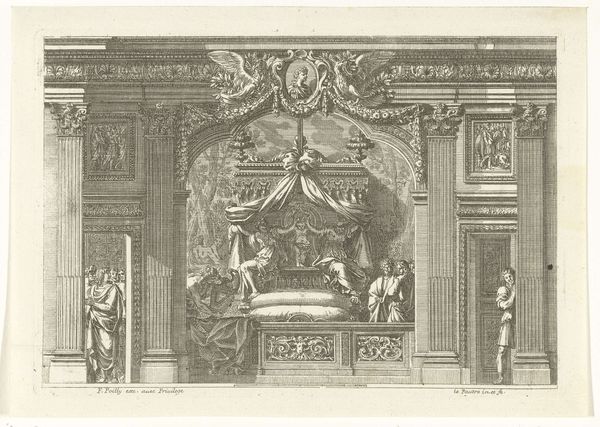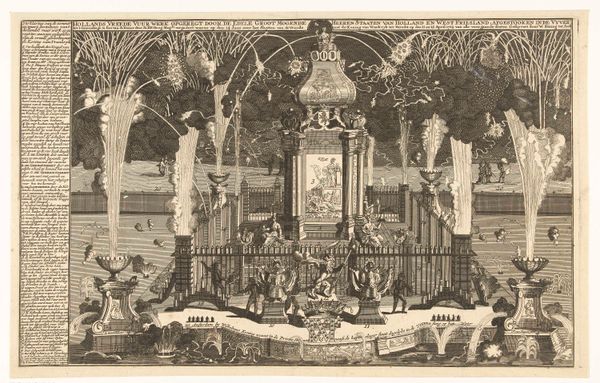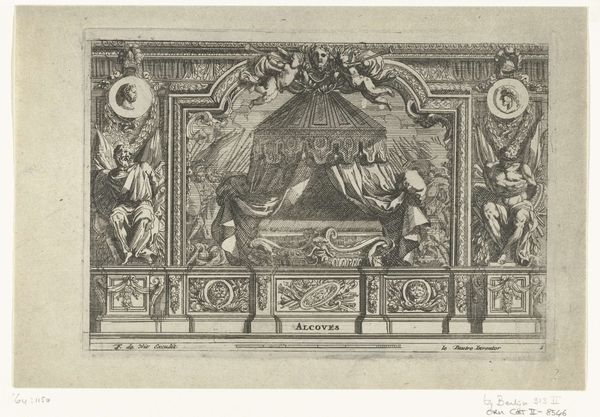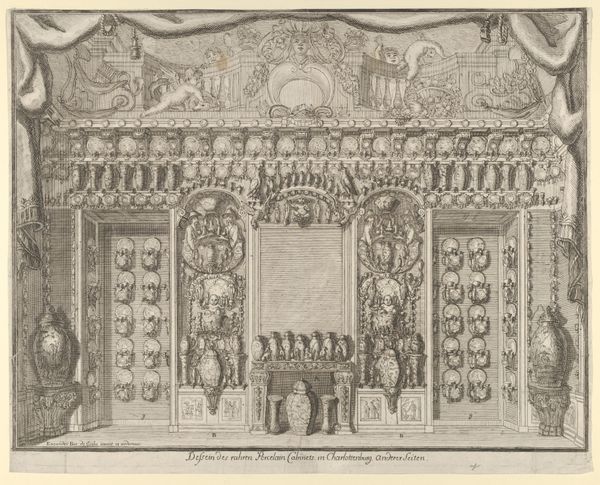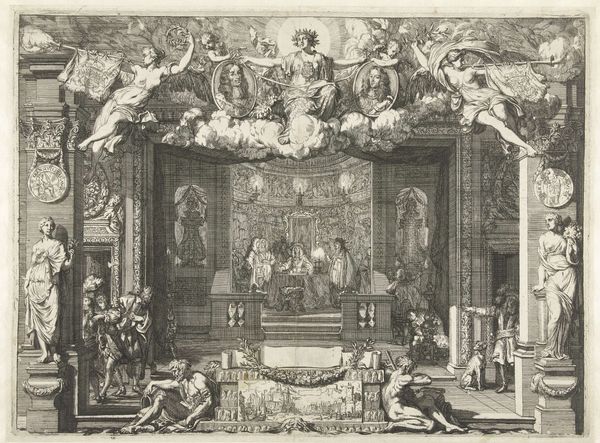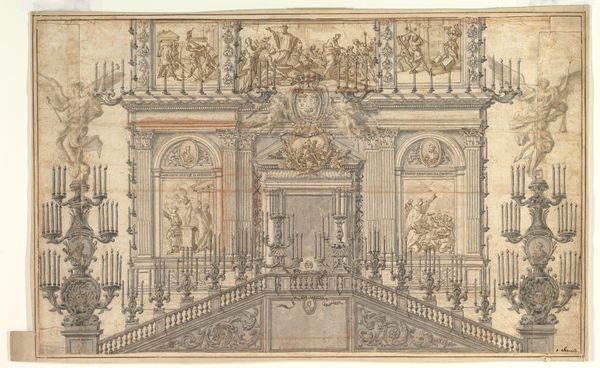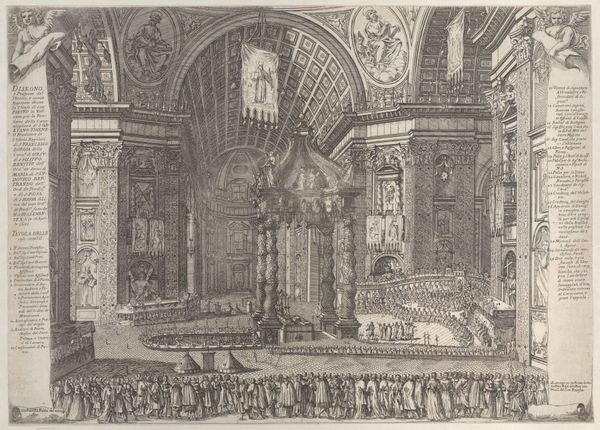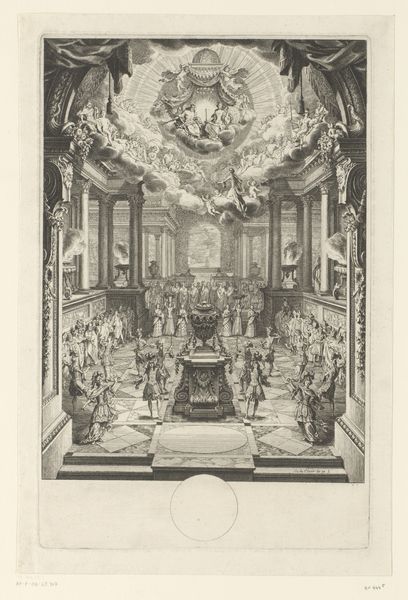
Catafalque of Charles X Gustav, King of Sweden, in the chapel of the castle in Stockholm (Castrum doloris in funere... Caroli Gustavi), from De rebus a Carolo Gustavo Sueciae rege gestis... 1696
0:00
0:00
drawing, print, engraving, architecture
#
drawing
#
baroque
# print
#
history-painting
#
engraving
#
architecture
Dimensions: Sheet: 11 7/8 × 15 1/4 in. (30.1 × 38.7 cm)
Copyright: Public Domain
Editor: This is Jean Le Pautre's 1696 engraving, "Catafalque of Charles X Gustav, King of Sweden." The scene feels intensely formal, a carefully constructed space for mourning. The sheer scale of the architecture depicted is what really strikes me. How do you interpret the staging of power and grief in this image? Curator: It's important to recognize that displays of power, even in death, are profoundly political acts. Consider the context: the late 17th century, Sweden navigating its role on the European stage, still relatively soon after the Thirty Years' War. What does this carefully orchestrated scene of mourning tell us about how the Swedish monarchy wished to be perceived, both internally and by other nations? Editor: That's a really good point. It seems almost like propaganda, even though it's supposedly about grief. All that grandeur feels very calculated. Curator: Exactly! The catafalque itself is an architectural statement. What does this temporary structure communicate about permanence and legacy? And what about the gaze of the viewer? The artist positions us within this constructed reality, inviting us to participate in a carefully managed performance of power. How might different viewers, depending on their class or nationality, have responded to this image then? Editor: I guess seeing it as stage-managed performance shifts everything. I was initially caught up in the somber mood, but thinking about the intended audience and the political implications makes it much more complex. It wasn't just about grief; it was about projecting strength and solidifying power. Curator: Precisely. Art like this demonstrates how intertwined expressions of grief could be with political posturing and attempts at self-preservation. Editor: Wow, I had not considered that. I see it very differently now. Thank you.
Comments
No comments
Be the first to comment and join the conversation on the ultimate creative platform.

